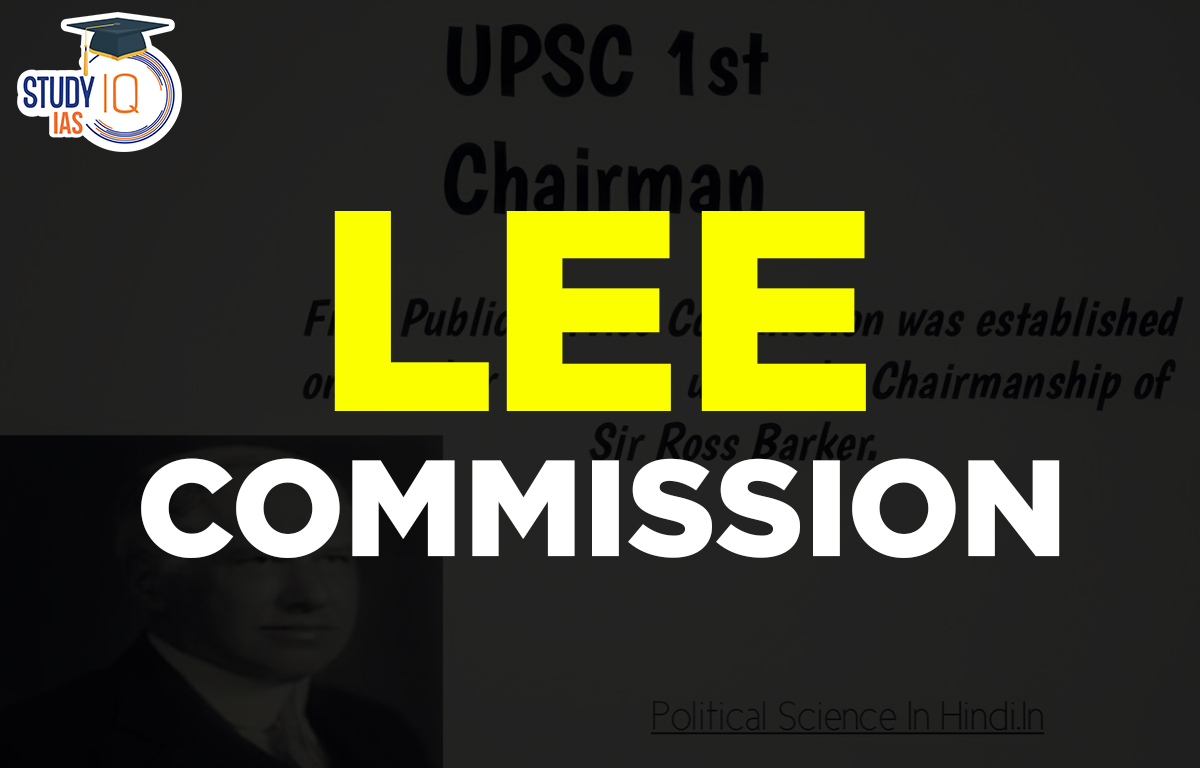Table of Contents
Lee Commission
The Lee Commission was created in 1923 under the chairmanship of Lord Lee, with an equal number of Indian and British members, with the intention of examining the racial makeup of the superior civil service of the Indian government. It turned in its findings in 1924. The commission considered the suggestions in the Islington Commission report as well as the current standing of two service groups, the All-India Services and the Central Services (1912). Provincial Services were not taken into consideration because the provincial administrations already controlled them. This article will cover the Lee Commission, which is useful for preparing for the UPSC exam.
Read about: Two Nation Theory
Lee Commission History
Lord Lee established a Royal Commission on Superior Civil Services in India in 1923 amid a significant political uproar in India over the unfavorable British reaction to the Indianization of services and in light of a number of complex issues pertaining to public service matters. With an equal number of Indian and British members, Lord Lee created the Lee Commission in 1923 to investigate the racial makeup of the government of India’s top public service..
The committee reviewed the All-India Services and the Central Services’ current positions as well as the recommendations made in the Islington Commission report (1912). Indians, partially through promotion and partly through direct recruitment. Additionally, India should host the civil service test.
This was done in keeping with the principles of the Montagu-Chelmsford Reforms Policy (1919), which gave the issue of the Indianization of educational services particular attention. The Islington Commission’s suggestion of only 25% positions for Indians was essentially rendered obsolete by the Montagu-Chelmsford reforms, which called for one-third of all appointments to higher posts to be made to Indians.
The Lee Commission’s primary suggestion in this regard was that 40% of Indians and 80% of future entrants should be directly recruited, with 20% of the superior posts to be filled by promotions from provincial civil services. Indians were generally unhappy with the pace of Indianization of ICS and other superior agencies. After the Lee Commission, the Indian Statutory Commission was a significant committee that looked into issues with India’s superior services.
Read about: Indian Independence Act 1947
Lee Commission Features
The British government commissioned the Lee Commission in 1923 to look into the racial makeup of the better Indian public services provided by the Indian government. The group, which included both British and Indian members in equal numbers, was led by Lord Lee of Fareham. The Lee Commission suggested in 1924 that 20% of new recruits would come from the provincial service, 40% would be directly recruited Indians, and 40% would be British.
It was known as the Royal Commission or the Superior Civil Services in India because it was only interested in the Superior Civil Services. The Commission thought that creating a Public Service Commission was essential to helping the government fulfil its duties. As “one of the cardinal characteristics” of its report and “as forming an integral and important part of the whole structure” of its recommendations for the future of the services, it viewed its recommendation to create the Public Service Commission. More than half of the service’s 1,000 members by the time India gained independence in 1947 were Indian, and many of them had considerable experience and occupied high positions.
Read about: Mountbatten Plan
Lee Commission Recommendations
The Commission suggested categorising main services into three categories: (a) all India, (b) central, and (c) provincial. The ICS, the Service of Engineers’ Irrigation Branch, the Indian Forest Service, and other organisations should all continue to hire, according to the secretary of state. Provincial governments hire for transferred areas like civil medical service and education.
It will be possible to accomplish direct recruitment to the ICS in 15 years on the basis of 50:50 parity between Europeans and Indians. The Public Service Commission needs to be created immediately (as laid down in the Government of India Act, 1919). The management of state railways, posts and telegraphs, customs, audit and accounts, and scientific and technological departments were among the responsibilities of the central services, which also dealt with Indian states and foreign affairs.
The Secretary of State should continue to appoint and oversee the All India Services, which include the Indian Civil Service, Indian Police Service, Indian Medical Service, Indian Forest Service, and Indian Service of Engineers and work in restricted administrative areas.
The Lee Commission’s main recommendation centred on the hiring and appointment of employees for services that operated in transferred fields (such as Indian Educational Service, Indian Agricultural Service, Indian Veterinary Services, etc.), which were to be handled by the corresponding local governments. These services were to be decentralised as a consequence. Existing All India Services officers were to keep all of their rights as officers, but the provincial governments were only to be granted appointment authority when there were new openings.
Read about: Direct Action Day
Lee Commission UPSC
The British government accepted the suggestions made by the Lee Commission. The only All India Services that continued to exist after the All India Services in the transferred agencies were discontinued were the Indian Civil Service, Indian Police, Indian Service of Engineers (Irrigation Branch), Indian Medical Service (Civil Branch), and Indian Forest Service (except in the provinces of Burma and Bombay). The Public Service Commission of India was founded in 1926, and on behalf of the Civil Service Commission of England, it oversaw the examination for civil service recruitment in 1927.
Read about: Interim Government


 Jallianwala Bagh Massacre, Date, History...
Jallianwala Bagh Massacre, Date, History...
 Important Lakes of India, State wise and...
Important Lakes of India, State wise and...
 Buddhism History, Origin, Sect, Councils...
Buddhism History, Origin, Sect, Councils...





















